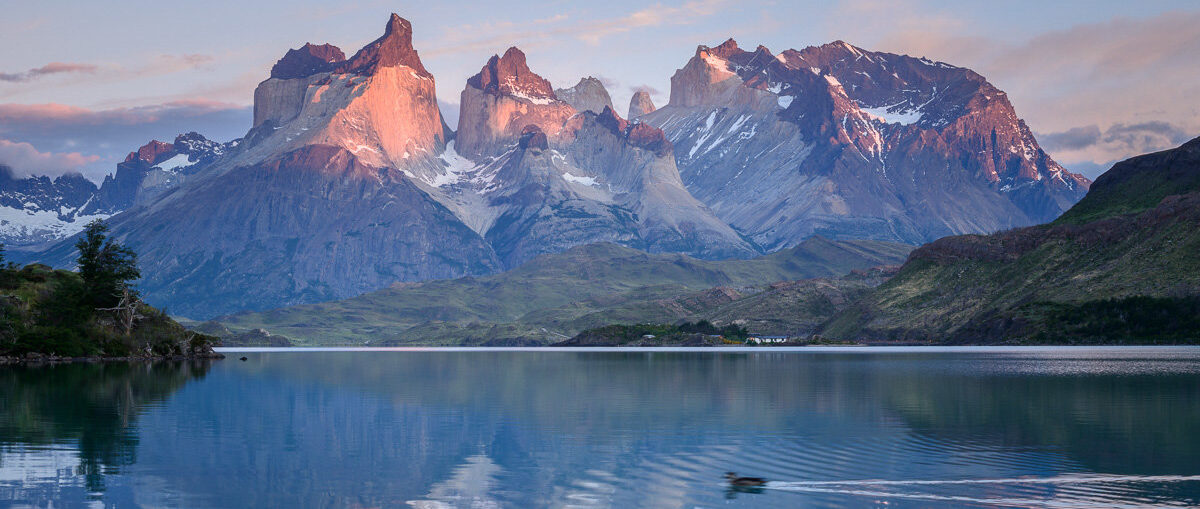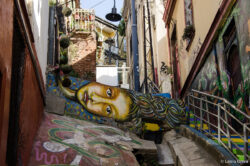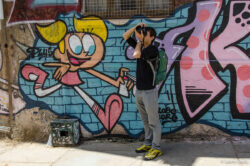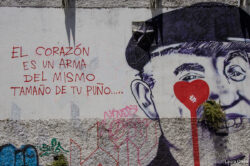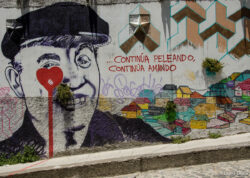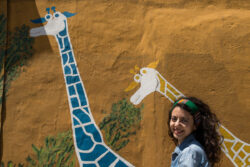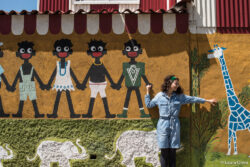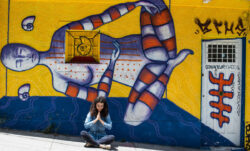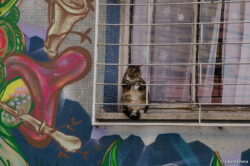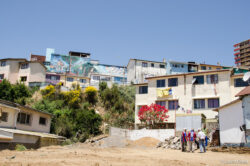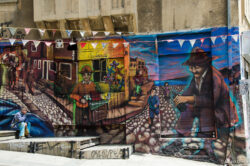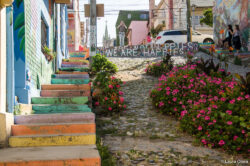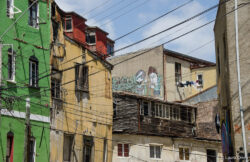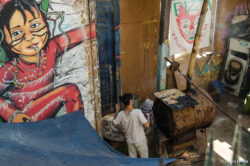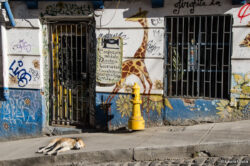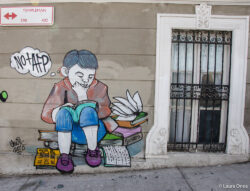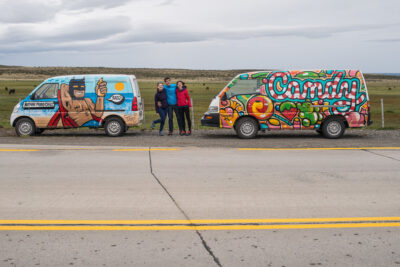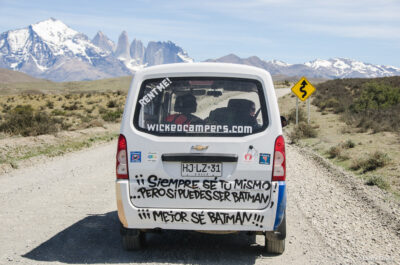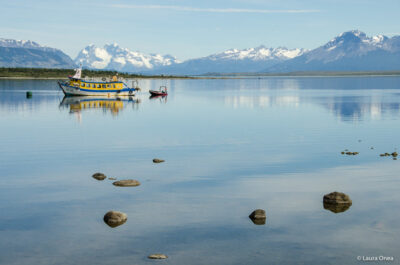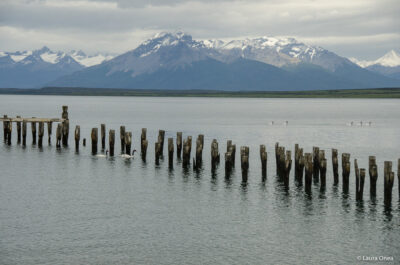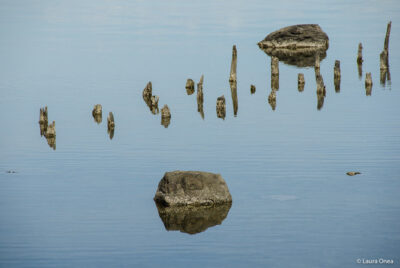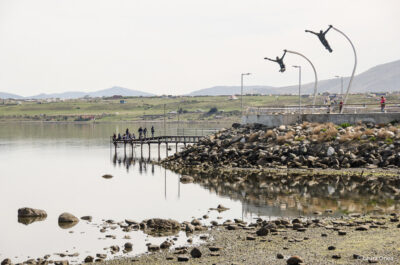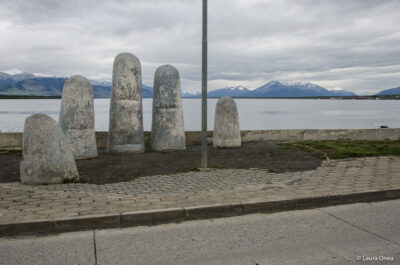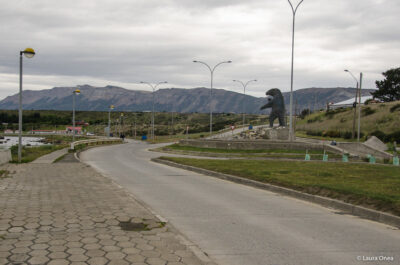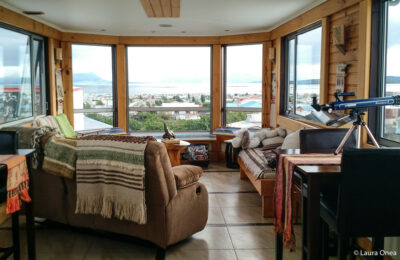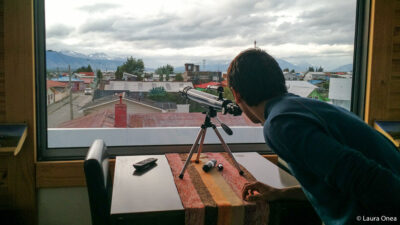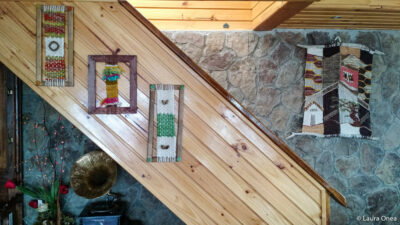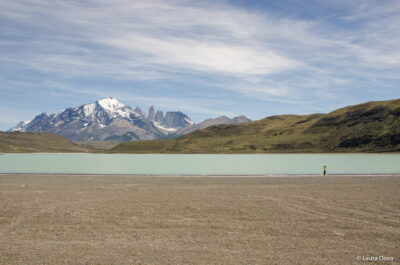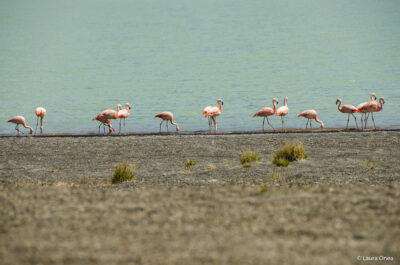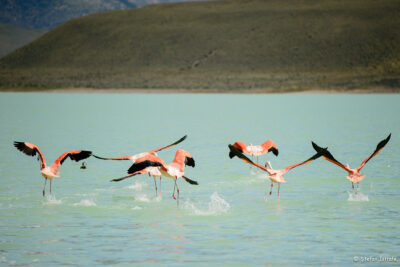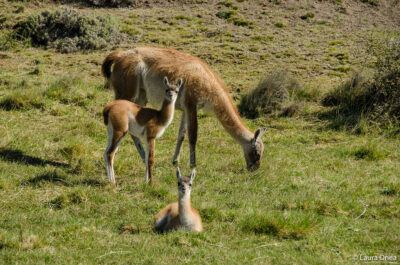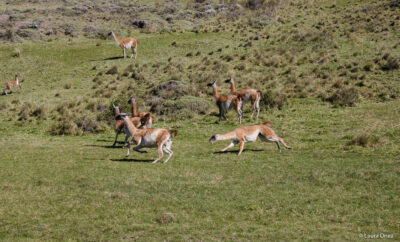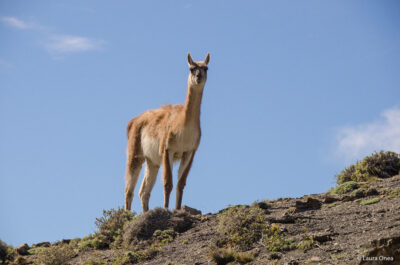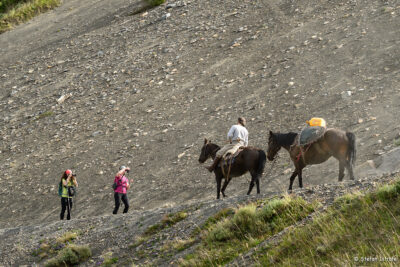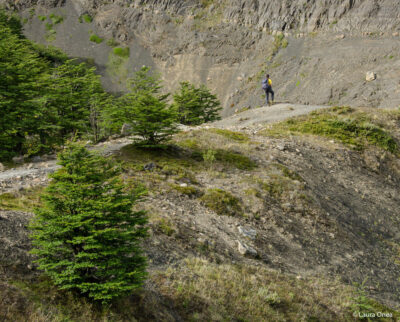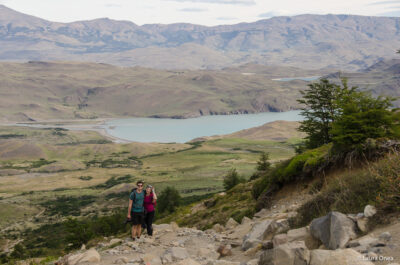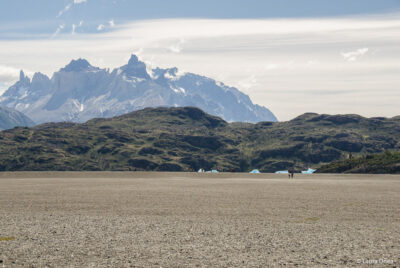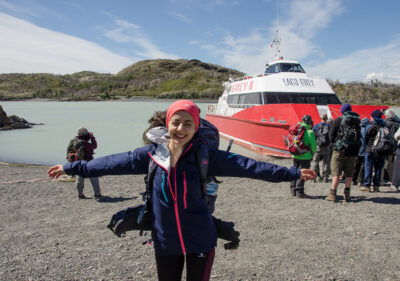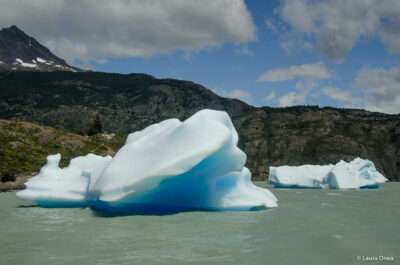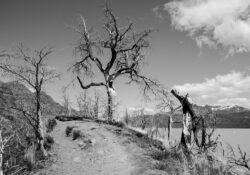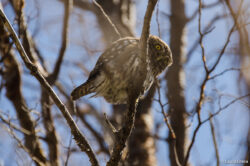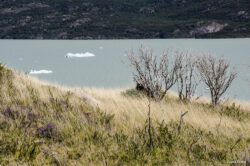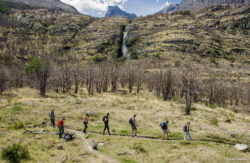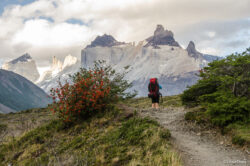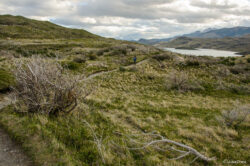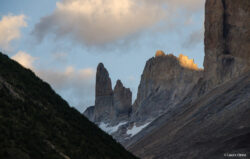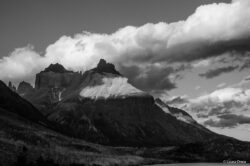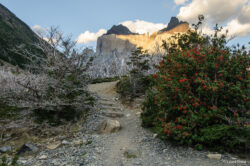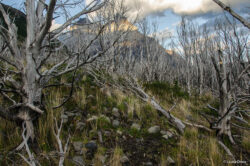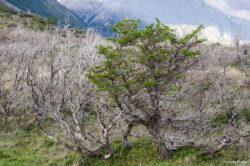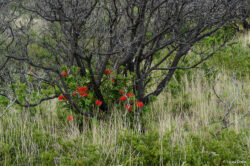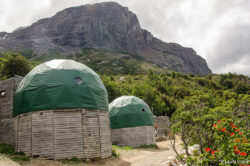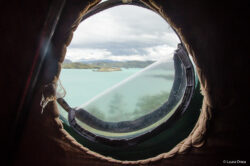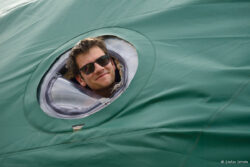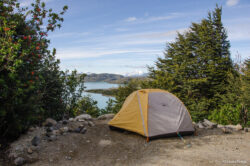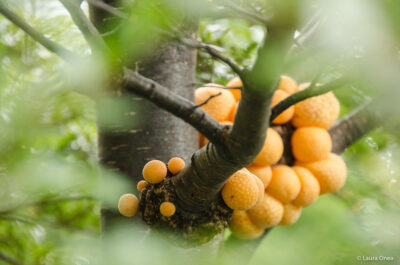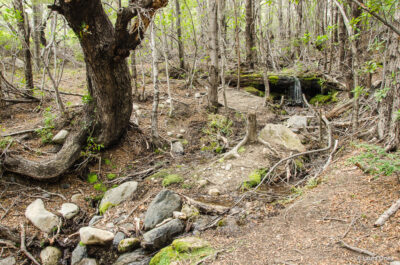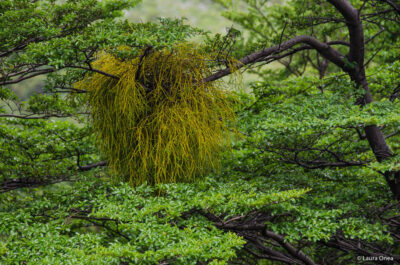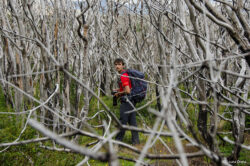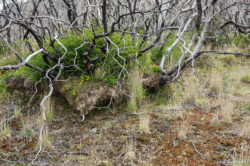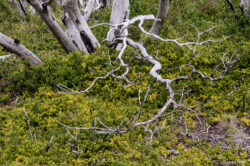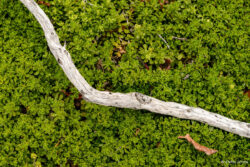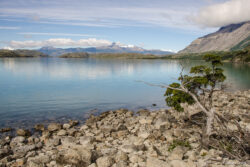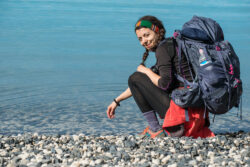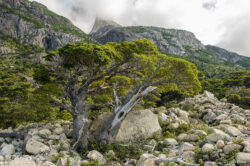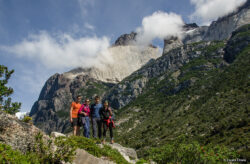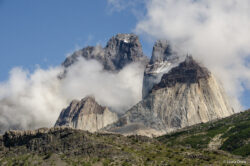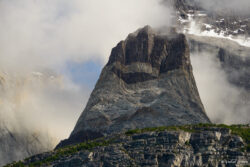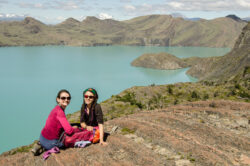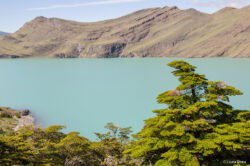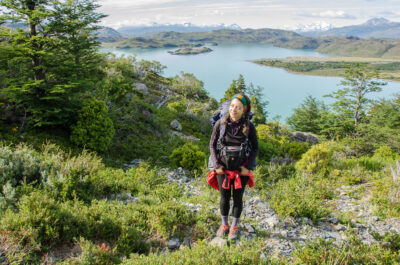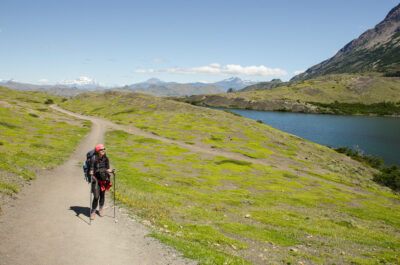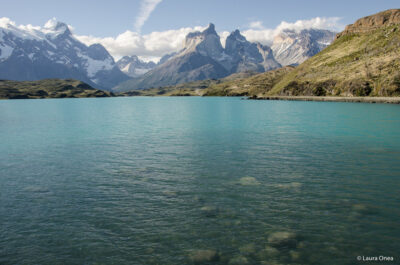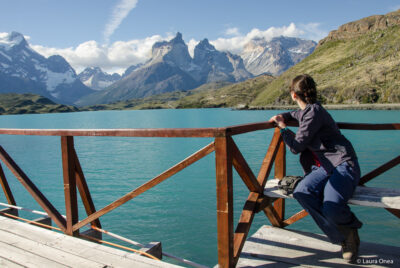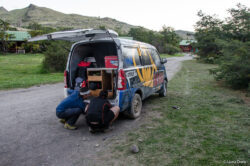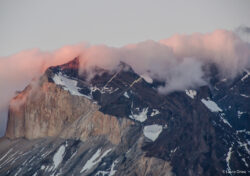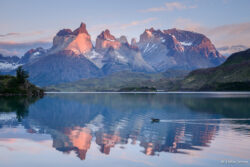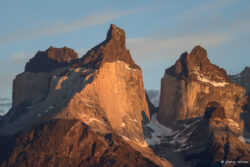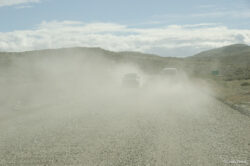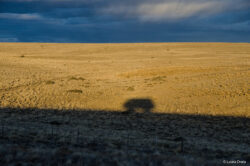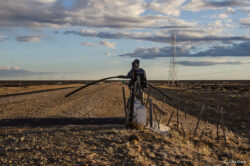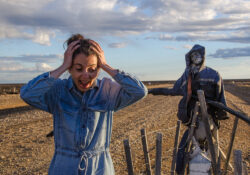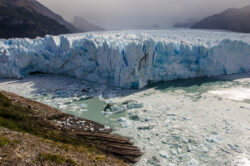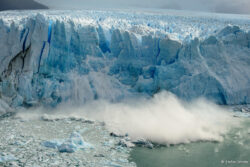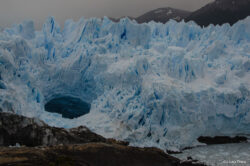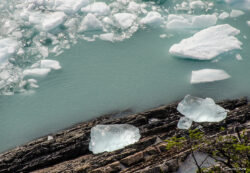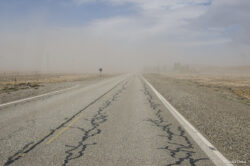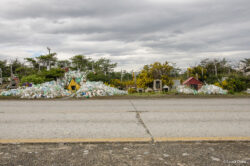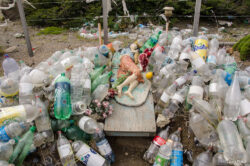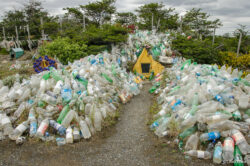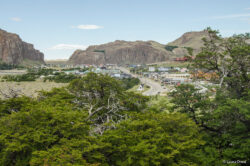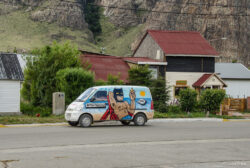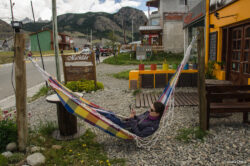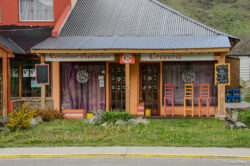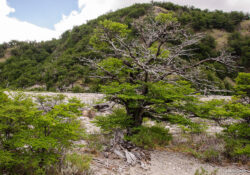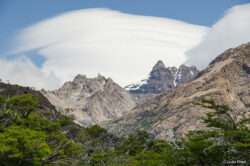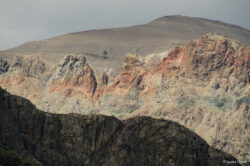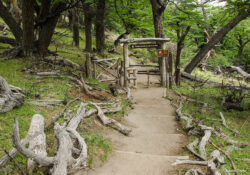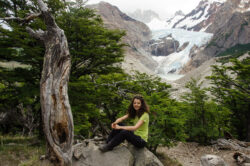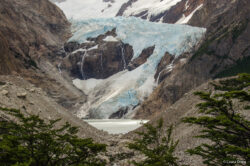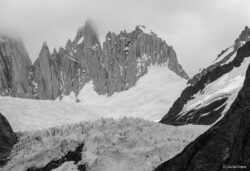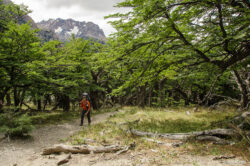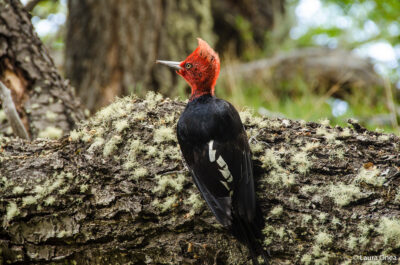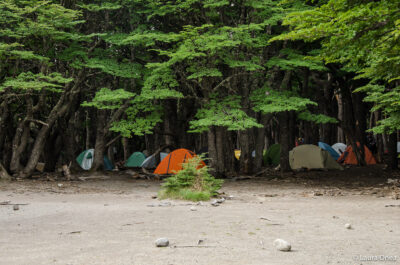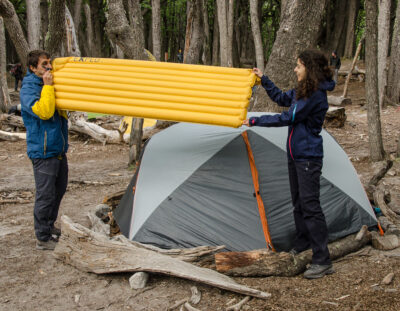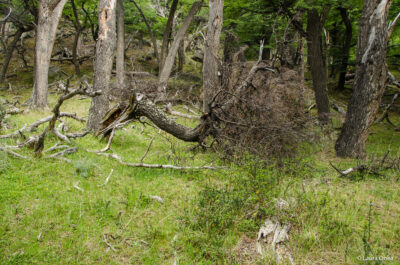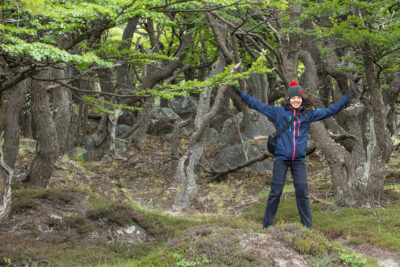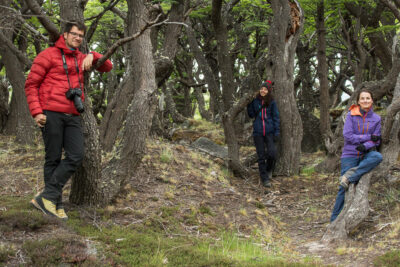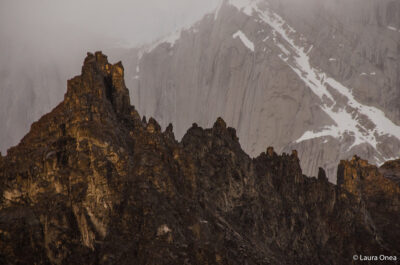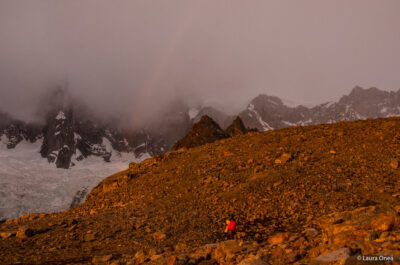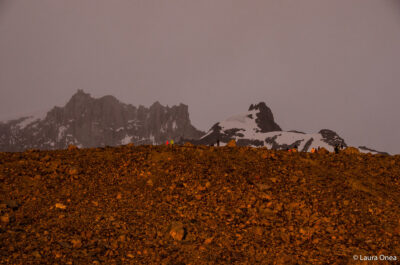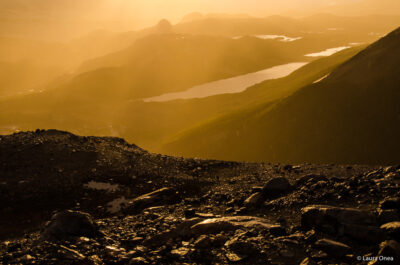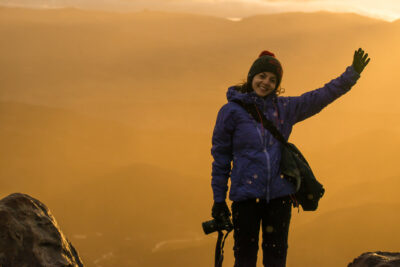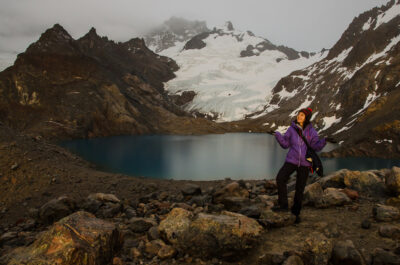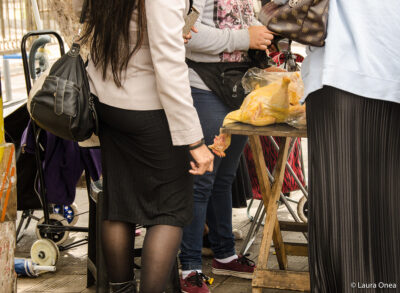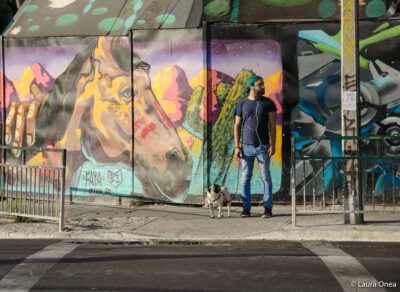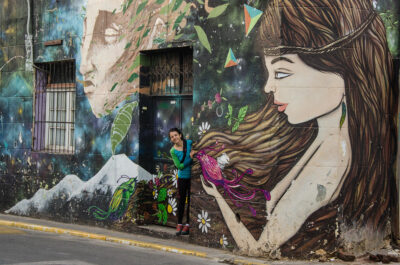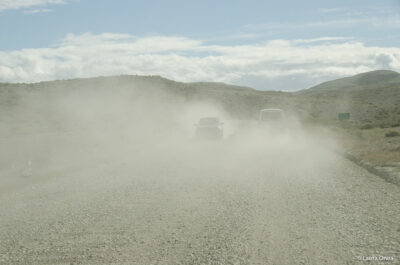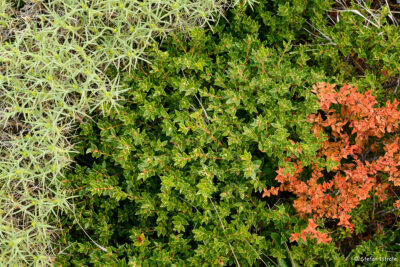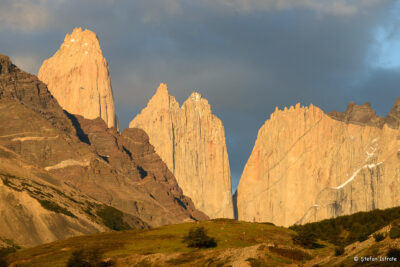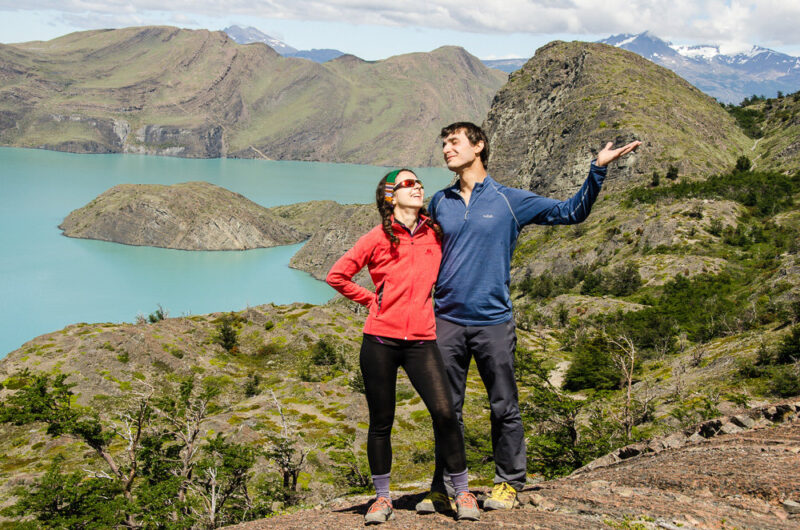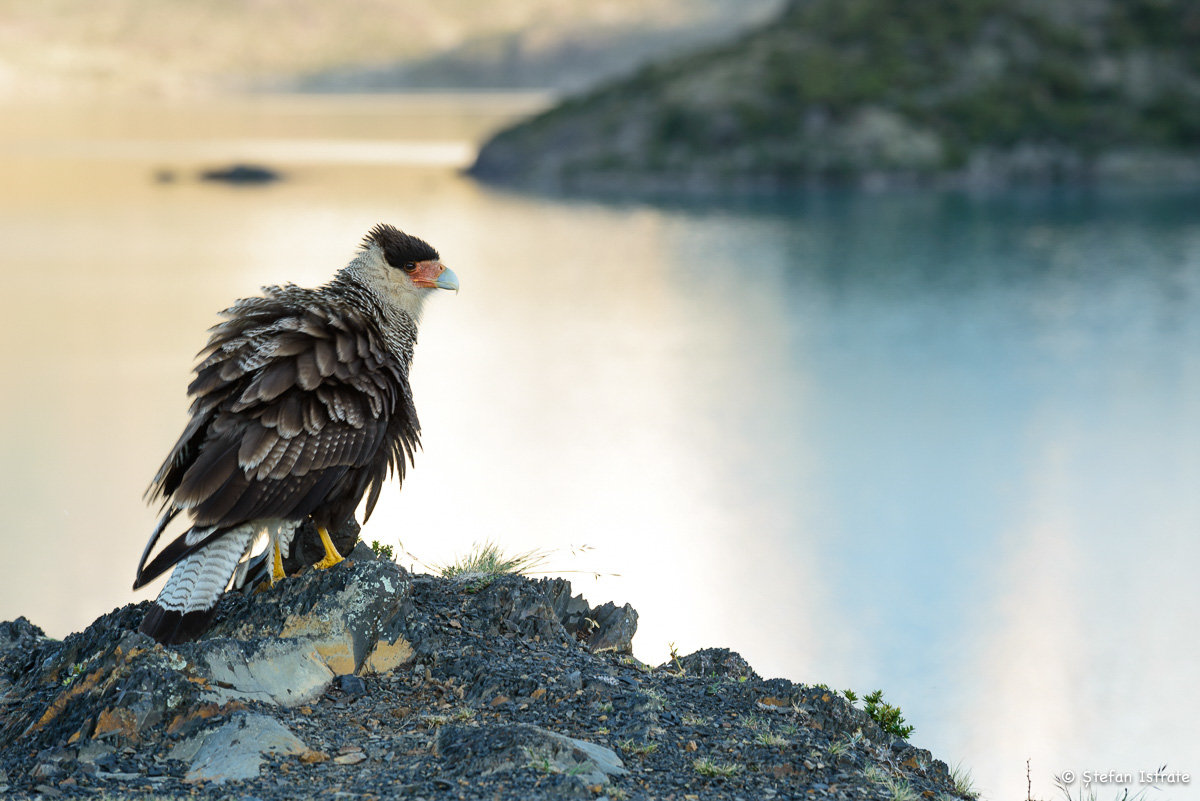
Updated on September 27, 2020
Vientos y otros cuentos Patagonicos
I remember that my mother used the expression ‘To Patagonia!’ quite often when, as a child, I was kind of bothering her with repetitive and silly questions: ‘But wheeere are we going?’ or ‘Wheeere are you going?!’. Later in life (actually not that long ago), I found out that Patagonia is not at all something fictitious, but an extraordinary beautiful and isolated (that’s where the expression comes from) place on Earth. As Bruce Chatwin famously wrote, Patagonia is “the farthest place to which man walked from his place of origin”, and to this day many adventure seekers and landscape photographers are lured by its remoteness and uniqueness. Seekers of remote experiences ourselves, we decided to see it with our own eyes and hearts.
Our initial plans to explore it during autumn were delayed, hence we bought the plane tickets for the end of spring. We did our best to plan most of the details ahead, knowing that it’s going to be a challenging trip, especially when it came to logistics. It may be that the national parks have become quite touristy in the past years, but in between, there lies a giant Nothing where you will barely find human presence. Don’t expect any gas stations, restaurants or supermarkets (what’s that?). Even after putting a lot of thought into the trip, not everything went according to plans. I guess this is what makes it an adventure, right?
If you are on a lower budget (as low as one can be in such an expensive place…) and if you also fancy a longer layover, in order to catch a glimpse of something different from Patagonia itself, a good idea is to check all the combinations of plane tickets. We managed to get 6 flights for approximately 700 GBP / person, which is quite a reasonable price. It will take some time to do a bit of research and match prices, but it is definitely worth it.
Taking off from London, with a short layover in São Paulo, we stopped in Santiago de Chile with the intention to spend two days exploring the artsy Valparaíso. First thing to notice, in an array of similitudes to my native country, Romania, was the aggressiveness of the taxi drivers, strategically placed inside the ‘Arrival’ area. Just say ‘No, gracias’ and look for a sign that says ‘Official TAXI’, where you will be paying a fair price. After the slalom between the mad drivers, we rented a car and off we went, 1.5h to destination. We had an Airbnb accommodation in Viña del Mar, a coastal resort city. We noticed an interesting and poignant contrast between cosmeticised boulevards along the beach with altitude competing palm trees and modern buildings, back quiet neighbourhoods with elegant houses and blooming trees, and a noisy and less aesthetic city centre. If you are a vegetarian, but not only, don’t miss out the delicious food at Le Bistrot Merci. And I would definitely recommend a sleepover in Nina’s ecological house, with top view over the city. Though less popular than Valparaíso (which is, in our opinion, almost always a better option) this city deserves your attention. In opposition, Valparaíso is a burst of authenticity through its cliff top houses, vibrant colours, street art and poetry. I loved it so much, I couldn’t get enough of it; there are drawings everywhere you look. I bet the Chilean artists can’t really make a living out of their work, however, I could grasp the passion blending in with the graffitis on the almost living walls. You can easily get the feeling of wandering through a large and vivid open-air museum. Its poetic decadence, the mixture of poverty with touristy treats, large amount of stray dogs (a second similarity with the streets in Romania), smart and aesthetic use of colours, make the city a charming mess.
After two days spent in these neighbouring cities, we headed to the airport to return the car and catch the plane to Punta Arenas, where we were to meet our friends and trip companions, Victor and Sînziana. Remembering the episode from the car return, it is worth mentioning that speaking a bit of Spanish (even the basic vocabulary, you don’t need much) in both Chile and Argentina, will prove extremely useful in specific situation, like this one. A vast majority of the locals won’t speak English at all. When we got to the place, there was absolutely no one there from the car rental company to pick up the car, though we agreed with them beforehand that we would be bringing it back at a certain time. The only person we could find was a gatekeeper who was as surprised as we were by the fact that we needed to return the car. He just gave us a chaotic explanation for why the right people were not there. We agreed, in Spanish, that we can leave the car there and that he would take care of it, though I am not sure he had more information than we had. However, the fact that I could communicate with him in the local language saved us from missing our flight. And this was not an isolated case during our trip… One of those very few moments when I find a meaning and use of my degree in foreign languages. :))
Punta Arenas, one of the largest cities in Patagonia, located on the legendary Strait of Magellan, is, like many other places here, a mixture of wild landscape, shabby neighbourhoods and recent prosperity brought along by tourism. The city is a convenient base for travellers heading to Tierra del Fuego, Torres del Paine, or Argentina. In another train of thoughts, there seems to be a strong connection between people living in a 3rd world country, where opportunities are a rare privilege, and their over the top good mood and sense of community. Which reminds me of a book I am currently reading and which I strongly recommend called ’Sapiens: A Brief History of Humankind’, that, among others, brings solid arguments sustaining this theory.
We’ve had one of the most delightful conversations with a taxi driver, a local guy, on our way to the accommodation. I felt my Spanish was improving while chatting with him on a wide range of subjects. I was so proud of myself that I even understood the local anecdotes :)) ; such a storyteller he was, cheerful, and kind, and present, like many other people we met along the way. A car ride that made us feel more like home in this country. Punta Arenas was the place where we rented our campervans, which in the end proved less useful, thus less cost effective than we had initially thought. First of all, we couldn’t make them a sleeping option due to lack of space (it proved way too tiring to optimise the space for both luggage and bed each evening, after a long day of either hiking or driving) and due to the thick sticky Patagonian dust. There was no air conditioning in the campervans, which wouldn’t necessarily be a big thing if it weren’t that warm, whereas the dust insisted on getting (literally) everywhere as we had to keep our car windows open. If not a B&B, refuge, or hotel, we definitely preferred the tent to the campervan, where we could smell and feel fresh air and nature. Well, except during one night when the wind was that strong that it got into our tent as well. Secondly, we could feel every bump in the road, and there are not few crazily long off-roads in Patagonia. Other than that, life inside the campervans, Batman and Candy, as their stage name indicates, for roughly 2 weeks, was quite fun and added to the adventure.
250 km northwest from Punta Arenas via Ruta 9 or Ruta del Fin del Mundo (not very far from the actual truth) there is Puerto Natales. It is the capital of the province Última Esperanza, name given by the first European to discover the area where the city is located, Juan Ladrillero, a Spanish explorer, who was looking for the Strait of Magellan during his voyage in 1557. Although the city has flourished in the past years, mostly through reaping the benefits of serving as a gateway to Torres del Paine National Park, I found Puerto Natales way more charming, cosier and more hospitable than Punta Arenas. Going forward, as strange as it may seem, the restaurant where we ate the best was a vegetarian one, ‘El Living‘. We left with the misconception, or better said, with the resignation, that food in Patagonia will be a big minus during our trip (disclaimer: not only that 3 of us are vegetarian, but we are also healthy eaters, which makes us quite picky when it comes to food), and ended up being pretty impressed by their menu. Beside the fact that meat is not necessarily their most popular dish, you have quite a wide variety of tasty and healthy dishes to choose from. And by the way, guanaco is not their traditional cooked meat, as I had thought, but lamb. Puerto Natales is also a port city, with lovely views over the mountains, so do take a stroll along its shore; it’s a delight.
The best accommodation we stayed in that was not a camping site was ‘Viento Patagonico‘ in Puerto Natales. Although it has the status of a hotel, we didn’t feel like being in one at all (we are not very big fans of hotels, they are way too impersonal, especially if linked to trips like this one). Clean, comfortable, spacious, very good buffet breakfast, friendly hosts, and one of the loveliest attics I have ever been in, overlooking the mountains. Very good value for the price.
As we slept in a different place every single night, we headed to Torres del Paine the following day, with the intention to start the ‘W’ circuit. The 4-5 days hike is the most sought after in the park, and can be done in either direction, from west to east or vice versa. Our not so usual plan was to dedicate 4 days to the trek, do the whole east side of the ‘W’ on the first day, come back to the base and sleep at Hotel Las Torres, then leave one of the cars there and drive the other to the west base near Hotel Grey, in order to continue the hike from the Refugio Grey and finish it back to Hotel Las Torres. I know, complicated, and not everything went according to plan. Not because of how we structured the hike, but mainly because of the fact that we didn’t allow more days for it. Which was also the main reason, I think, for not being able to enjoy the landscape, photographically speaking, to the fullest. We got it a bit wrong from the start, as we scheduled driving (from Puerto Natales to the park) and hiking in the same day. The actual drive from one place to the other is not that long, approximately 1.5 – 2 hours, but we didn’t take into account that the road would be less dull than what we encountered that far. Thus, the fact that we were constantly stopping to take a breath of the surrounding landscape, photograph guanacos and flamingos, added at least one hour to it.
Oh, yes, and on top of that, we underestimated the time it would take us hiking from Hotel las Torres to Mirador las Torres and back, which is roughly 8 hours! We managed to do less than half of it, reaching only the first point of this side of the ‘W’, which is Refugio El Chileno. They say that the Patagonian realm got very touristy in the past couple of years, which may be the case, in some respect, but don’t imagine that you will get to see an image similar to that of the popular ski resorts in Europe, Yellowstone or the Great Wall of China. There are a couple of camping sites, refuges, or even luxury hotels, but the parks are not suffocated by their presence. The demand is still way higher than the offer. Most probably, the locals try as much as possible to preserve its wilderness, which is in the end Patagonia’s loudest treasure. One downside of this is that there isn’t much information you can find, anywhere, on its routes, roads, gas stations, or anything else that you might be needing at some point. Another downside, which is more disturbing than the first one, is the expensiveness of the place, especially of the ‘W’ circuit. There are a few refuges and cabins along the hikes (which you will find available only if you book well in advance), but they are horribly expensive. I won’t even mention hotels, or the price for one night in that luxury. We slept in the tent for 3 nights, alternating with one night in a refuge with beds for 8 people, and we paid 90USD for one night per person. And this was one of the cheapest in the area!
Our first close encounter with the Patagonian nature, along the hike from Hotel las Torres to Refugio El Chileno, was not as rich as we expected. The light is quite harsh at this time of the year, while the vegetation seemed too lifeless, where there was one. This fact, was, however, compensated by the abundant wildlife we had the chance to see along the road to Torres del Paine. Never have I had the privilege to experience so many random encounters with such a wide variety of birds and animals.
One of the highlights of the trip, as well as one of those little moments of pleasures, was putting the tent in the camping sites (it’s illegal to camp outside these areas, anywhere in Patagonia), followed by an in-house exquisite dinner and/or breakfast cooked on the camper van’s stove. And the most sought-after item of any meal was the perfectly ripped avocados! If the local fruits in both Chile and Argentina profoundly disappointed us, at least we had plenty of avocado, the best I have eaten so far!
The second day, we left one of the cars, Batman to be more precise, in a parking space near Hotel las Torres and the 4 of us squeezed in Candy until Hotel Grey, in order to return from the hike following a different path. Despite the annoying off-road, we found the view on this side of the mountain much more refreshing and spectacular than the one we experienced the day before. Keep in mind that once you park the car there, you need to be sparing another 45 min for buying the tickets and for walking for about 20 min ‘till you reach the boat. It was on this shore surrounded by magnificent glaciers, that I felt the Patagonian wind in one of its most intense moods. Once you get to Refugio Grey by boat, you can either continue the trek up to see the glacier up-closely, or, as we did, continue the hike to Camping Paine Grande or Camping Italiano, depending on how much you want to walk.
It takes some time to get used to the landscape, as the heat and the scarce vegetation can get quite overwhelming, but little by little we started to adapt to its specificities. One of the most peculiar and fascinating elements to observe is how nature, the wind in particular, shapes the landscape. Most of the trees are left leaning almost to the ground, as in a solitary bow. They are a poignant reflection of how powerful and domineering the wind here can be. Another particularity of the landscape are the marks left by the regular fires, with the wind being again the main character. In December 2011 Torres del Paine National Park was ravaged by a fire that destroyed 17 thousand hectares of forest. As strange as it may seem, and as devastating as it is for the landscape, the mixture of fallen and rotten trees inflicts a fascinating amount of drama and dynamism altogether. The now lifeless and solitary trees create an image of outstanding beauty, which, paradoxically, communicates life rather than death.
As we went along, the heat started to remind me of the amount of warm clothes we carried with us, as unprepared as we were for that type of weather. The lack of vegetation and the heavy backpacks made us get even angrier at the burning sun. By the time we arrived at Paine Grande, we were already dead tired and decided to camp there, instead of walking another 2.5 hours until Camping Italiano, as we had initially agreed upon. No luck, however, the lady at the reception made it clear, with barely raising her eyes from whatever she was doing at that moment, that ‘we don’t have any availability’. My trick with doing the puppy eyes and putting on a warm smile on my face, didn’t work this time. Which left us with no other option than to continue our journey until Camping Italiano. Don’t make any hopes to eat there either without a reservation or preordering the meal, as it seems their portions are numbered and probably served only to people overnighting there. We ate a bit from our own backpacks to regain some energy and off we went, hoping to arrive at the destination before dark. The view from Paine Grande is, in my opinion, one of the best of the ‘W’ circuit. Here, the majestic silhouettes of Los Cuernos, or ‘The Milk Chocolates’, as Victor branded them, start to stand sharp against the sky, while the vivid red of the Chilean Firebush stands in an almost surreal contrast to the rest of the lifeless vegetation.
The last 1.5h were pretty exhausting, but we were once again brought to life by one of the most mesmerising natural elements I witnessed in Patagonia, namely a small silver forest, as I used to call it, with its array of noisy white trees, a species related to the birch trees. After a whole day of walking in the sun, it felt like entering (at least visually) the realm of Narnia. As the sun menaced to go down fast, we rushed to the camping site, and promised to get back and photograph the place in more detail.
And we kept our promise. The initial plan was to do the middle side of the ‘W’ the following day, going up the French Valley. But the tiredness and the heat convinced us to have some rest that day, wake up later and head to our next destination, which was Domo Frances (only 1h distance from Camping Italiano), skipping that side of the ‘W’. Instead, after leaving our stuff inside the dome, we excitedly went back to the winter forest. And we didn’t regret it, as we had more time to linger on it and quietly observe its details. Though uniquely beautiful, the scenery was, just like most of the Patagonian landscape, extremely complicated, which makes it hard to visually detangle it. At the same time, this is exactly what stretches the mind and widens the heart of someone who likes to photograph details and small worlds.
We had a good night’s rest at Domo Frances and in the morning we began our way to Batman, along another of the most beautiful landscape in Torres del Paine. Until you reach Refugio Los Cuernos, which is almost middle point to Hotel Las Torres, it’s the deserted beaches overlooking the mountains that will steal your heart. The serenity and infiniteness defining this place will seduce you to lie on the shore, under the shadow of one tree, and observe its beauty in awe.
As compared to the calmness and freshness of the first part of the hike, the second one was extremely hard to tolerate, as we walked in full sun again, along a desert that felt interminable, with not one tree or bush where to rest for a while. My back never hurt that bad.
After we had some good food at Hotel las Torres and got back the second car, we decided to go to Camping Pehoe and spend the night there. This was, in my opinion, the camping site with the most stunning view in the park. Actually, it’s worth mentioning that we were overall very impressed by the quality, location and cleanliness of the camping sites.
While the boys were busy repairing the flat tyre (Batman modo chill got in trouble), me and Sînziana spent the time admiring the peaks in sunset light and trying to take a photo of the local caracara (an eagle looking like a chicken) and of the funny but elusive armadillo.
The next day we said ‘goodbye’ to Torres del Paine and ‘see you soon!’ to Chile. Before crossing the border to Argentina we made a detour to Puerto Natales, as we were sure to find a gas station there and a vulcanizing shop for limping Batman. With both cars healthy and fuelled, we headed straight to the border, through Cerro Dorotea. Our next aim was to reach El Calafate in order to explore Perito Moreno, the majestic glacier. One of our biggest mistakes during the whole journey in Patagonia, was to take an off-road from Tapi Aike, thinking that we would take a shorter way to El Calafate. If I remember correctly we made 65 km in approximately 2 hours on a terrain that fried each and every neuron. We called it ‘the death road’, as we were inspired by the terrifying ‘scarecrow’ waiting for us with a big grim at the end of the road. Needless to say I recommend, with my whole being, taking the ‘long’ road through Esperanza! Tired as hell, we slept like babies in a lovely accommodation in El Calafate, ‘Kau Yatun’, with the best buffet breakfast.
Perito Moreno, located in the Los Glaciares National Park, is within easy reach from El Calafate, however, keep in mind that the last entrance in the park is at 6pm (during summer days). Once there, it’s hard not to be impressed by this gigantic block of ice. Measuring 30km long, 5km wide and 60m high, Perito Moreno is constantly moving. It inches forward up to 2m per day and is one of the world’s few glaciers that is still growing. Hearing and observing how pieces of ice start cracking and falling in the water like an earthquake of ice is frightening and breathtaking at the same time. Do have some patience to sit in one place and let yourself be captivated by its majesty, so that you will be able to catch one of these moments from head to tail.
Our last stop in Patagonia before going back to Santiago de Chile was Monte Fitz Roy, also located in the Los Glaciares National Park. If driving through Chile was made tolerable by some vegetation now and then, a rock or two on either side of the road, funny encounters with rabbits or guanacos, driving through Argentina was as boring and dusty as hell! Whereas the wind can blow with more than 100 km/h. There were times when I couldn’t have gotten out of the car and walk around without a bit of help from Ștefan. The only elements that woke us up from our reverie and brought some curiosity into our eyes were the uncanny roadside shrines surrounded by overwhelming empty bottles. Most of these shrines are built in memory of Difunta Correa, a woman who, as popular legends say, headed to the desert together with her baby in search of her husband, who was forced to join the military forces in 1940. Due to lack of water she died of thirst, but managed to save her baby by setting him to her breast. Now, Argentinians build these shrines and leave these bottles of water for the woman, in order to ‘calm her eternal thirst’.
The village of El Chalten is a gateway to trails surrounding the peaks of Cerro Torre and Monte Fitz Roy to the northwest. Near Fitz Roy, a path leads to the Laguna de los Tres viewpoint, which the one we decided to take. It was love at first sight with this colourful village. It takes merely 15 min to walk from one end to the other, but it’s enough to be enchanted by its picturesque vibe. The village is full of hikers going up and down the mountain, which will stir up your energy to follow their path. If you are going to overnight here, Spa y Cabaña Yaten is the best indulgence you can treat yourself with. They have a very cosy apartment for 4 people, plus one spa treatment, which is included in the price – a much needed whim after a couple of days of hiking.
We planned to reach Laguna de los Tres before sunrise, so in order to be closer to this point we hiked first until Campamento Poincenot. I enjoyed this park more than the one in Torres del Paine, not necessarily because the hike was way easier and shorter, but because we hiked mostly through a forest that I absolutely loved. The whole landscape finally started to look more like spring, as compared to the one Torres del Paine where almost everything reminded me of the desert. The trees shaped the same intricate nature story, but their thickness kept us from feeling that warm. It was a delight to walk through this kingdom of lively nature that offered windows to glaciers, waterfalls or mountain peaks from time to time. The camping site gave as good as it got, with its tall and strong trees serving as valuable shields against the fiery wind during the night.
We woke up at 4am and went on climbing to Laguna de los Tres, hoping we could see the mighty Fitz Roy sunbathing in the morning sun. Cerro Fitz Roy means ‘peak of fire’ or ‘smoking mountain’ – an appropriate description of the cloud-enshrouded summit. Explorers Perito Moreno and Carlos Moyano later named it after the Beagle’s Captain FitzRoy, who navigated Darwin’s expedition up the Río Santa Cruz in 1834, coming within 50km of the cordillera. Hard-to-get Fitz Roy didn’t honour us with its presence, but a spectacular sunrise over the valley and the lake, together with the subtle rainbow, made the steep climb to the top, while we were not yet fully awake, 150% worthwhile.
With this we ended our adventure throughout this far far away wilderness, called Patagonia, and went back to Santiago de Chile, passing again through Puerto Natales and Punta Arenas. With the desire to explore the city a bit, we spent one night in Santiago. With a growing economy, yet still imprinted in many ways with marks of a 3rd world country, the city is an amalgam of nuances and tones. Cosmopolitan, shabby, colourful, energetic, poor, sophisticated – it’s hard to describe it in one single word. While we weren’t at all impressed by its popular city centre, our senses were exalted by the walk along the artsy and vibrant Bellavista neighbourhood, with its sideways cafes and painted walls. Also, in Santiago we ate the most flavoured local fruits in the country. Mercado Central is the best place to find such fruits. We couldn’t have ended our journey in a more flavoured way than with a full glass of fresh cherimoya.
The Patagonian realm can be quite hard to digest for people like us who are not particularly friends with the desert, hence with everything that comes along with it: heat, thick dust that gets everywhere, harsh light, less or lack of vegetation. In between the national parks, there lies an overwhelming Nothing. However, if you can get past this, you will discover a unique type of landscape and a very rich and diverse wildlife. In Patagonia, nature grows barren and beautiful, while the solitude can make you feel both mesmerised and disoriented. On a micro level, Patagonia offers a wealth of experiences and sceneries.
